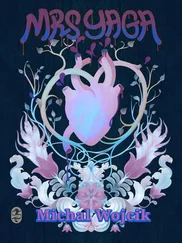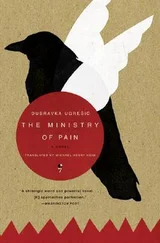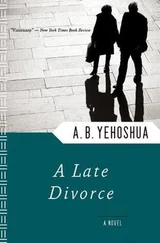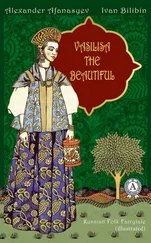Remarks
The character of Mevludin is undoubtedly analogous to the character of Ivan the Fool. ( I’m a fool, love. And once a fool, always a fool – says Mevludin). Pupa, Kukla and Beba – like the three Baba Yagas in the fairytales – indirectly help to make Mevludin’s dream come true, and it is precisely here that the correspond ence between your author’s literary exercise and the myth of Baba Yaga is strongest. The character of Mr Shaker can be identified with the character of the capricious emperor in Russian fairytales, whose rival is Ivan (the Fool or the Prince) and who will try to destroy Ivan before giving him his daughter’s hand. The sexual dimension is more explicit in your author’s text, because Mr Shaker is the king of protein-enriched beverages, with added hormones that turn out to cause impotence. Mr Shaker will end up dead, just like emperors in the Russian tales. One of the ‘Baba Yagas’, namely Kukla, will bring about his death. Dr Topolanek and David, Pupa’s grandson, are minor characters and do not show any particular connection with the Russian fairytale, yet they too are ‘fabulous’ in their own way: David as a deus ex machina (or, as Kukla says, a nepos ex machina ), and Dr Topolanek as some kind of contemporary wizard or trickster. Arnoš Kozeny has, of course, the potential to become like Koshchey the Deathless, Baba Yaga’s one and only true rival (and the relationship between Beba and Arnoš Kozeny could be revealing in this context), but even so, this motif remains undeveloped in your author’s text.
Allow me to mention here that a stupid girl, one who spends the whole day picking her nose and lazing on the stove, and eventually becomes a princess or a queen, is completely unthinkable in fairytales! The imagination of folktale-tellers created an equiva lent of male heroism in the characters of Slavic Amazons (the Russian Sineglazka , or the ‘Giant Girls’, Div-devojke , in Serbian folksongs), but grubby, idle, stupid girls are usually punished with death. Wealth, a throne and love are only conceivable as rewards for grubby, idle, stupid guys!
There is an interesting motif in the fairytale Vassilisa the Beautiful . As the mother lies dying, she calls for her daughter and gives her a doll that will help her in life. The doll can only be asked for advice after it has been given food and drink. [39] ‘Vassilisa went to her larder, fetched supper for the doll and set it down before her, saying: “Here you are, dolly, taste it and hear about my misfortunes: they are sending me to Baba Yaga, by torchlight, and she will eat me up!” The little doll ate her supper, and her eyes lit up like two candles: “Fear not, Vassilisa!” she said. “Go where they send you, and take me with you. As long as I am with you, Baba Yaga can do you no harm!”’ (From Vassilissa the Beautiful )
Vassilisa keeps the doll in her pocket as long as she lives. A doll as the abode of ancestral spirits (the mother’s, in this case) is something that features among the most ancient tribal beliefs of many peoples around the world.
The doll symbolically replaces the dead member of the family, it is the tomb of that person’s soul. Some African tribes have a custom that a widower who remarries makes a little statuette of his dead wife and keeps it in his hut in a place of honour. Respect is shown to the statue, to prevent the deceased from being jealous of the new wife. In New Guinea, after a death, members of the family make a little doll that protects the soul of the deceased. The dead person who is incarnated in the doll only offers to help if the rest of the household looks after it, feeds it, tucks it up in bed and so forth. [40] The Japanese electronic invention, the so-called ‘digital pet’ called tamagotchi, needs taking care of in just the same way as the wooden dolls in folk beliefs. The toy’s owner has to monitor its ‘happiness level’ every day (tamagotchi has to be fed and bathed, and the owner has to play with it a bit), otherwise the digital pet ‘dies’.
* * *
Among the tribes of northern Siberia, dolls’ heads are made from birds’ beaks. The doll is a pledge of fertility, so newlyweds take it into the bedroom on their wedding night. The evil spirit Kikimora can also pass into the doll. Then it has to be burned. In Kursk, for example, the doll’s face is left blank, without eyes, mouth or nose, for fear that an evil spirit will pass into the doll and harm the child that plays with it. Dolls which possess protective power are hereditary: mothers bequeath them to their daughters.
The Hantis, Mansis, Nenets and other peoples of northeastern Siberia made a special doll, called the itarm . They dressed it up and put it in a deceased person’s bed. At mealtimes, they would bring it morsels of food and make a show of deferring to it, for the doll served as the dead person’s double. This ritual passed into Russian fairytales. In the tale Teryoshechka , an old childless couple dress a little log in babies’ clouts and put it in a cradle. The log turns into a boy – a motif that endured long enough to reach Carlo Collodi and his famous Pinocchio. The well-known Russian wooden dolls, the matryoshka , emerged from the same typology of mythico-ritual thought.
Hunters in the forests of north-eastern Siberia build little wooden cabins that they call labaz or chamja . A labaz is erected on top of high wooden stilts (like the hen’s legs under Baba Yaga’s hut!) and it serves as a hunters’ storehouse, to keep dried food and other supplies safe. The back of the labaz is turned towards the woods, and the front towards the passing traveller. On ritual sites called urah , similar cult cabins were built, without windows or doors. Itarm dolls were placed in these cabins, dressed in furs. The itarm dolls occupied the whole interior – whence the description of Baba Yaga’s body filling her hut. For that matter, yaga or yagushka is the name of the furry ‘dressing gown’, a garment worn by women in north-eastern Siberia. Arkadij Zelenin insists on this interpretation, and very convincingly; he develops a theory that the Golden Baba or Sorni-nai was a shamanistic divinity of the northern Siberian peoples, who were resisting conversion to Christianity. Later, the legend of the Golden Baba spread – thanks to soldiers, travellers and missionaries – and was revived in fairytales as Baba Yaga.
Remarks
Although Beba, Pupa and Kukla are female nicknames, it is difficult to believe that the choice of these particular monikers is just coincidence. Beba is a common female nickname in urban Croatia, Serbia and Bosnia, while Pupa is found in northern Croatia, where it derived from the German, and in Dalmatia, where it derived from the Italian. Beba (a doll, but also a newborn baby!), Pupa (Latin: pupa; German: die Puppe ; Italian: pupa ; French: poupée ; English: puppet; Dutch: pop ), [41] The people of the Mansa tribe, in Siberia, say pupig or pupi for guardian spirits or the spirits of their ancestors, dwelling in little totemic wooden dolls.
Kukla (Russian, Bulgarian, Macedonian, Turkish, etc.) and finally Wawa (Chinese): they are all polyglot synonyms for ‘doll’.
There are several possible explanations of why your author uses nicknames. The first is connected with the author’s principle, which is to say the simple idea that the heroines are just dolls that come to life in the author’s hands. Perhaps the nicknames serve a ritual–protective function, insofar as your author has respected the taboo against mentioning any witches’ names. One of the reasons could be linked to Baba Yaga, who has sisters, also called Baba Yaga (like the Irish girl Brigid, whose two sisters are both called Brigid). The reason could also lie in the culture of male domination, where women’s names do not matter much anyhow (for a name is a symbol of individuation and identity), in other words where one woman is all women.
Читать дальше












